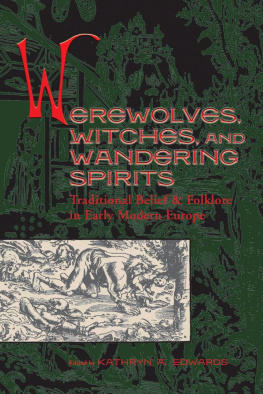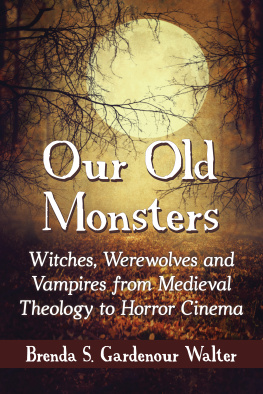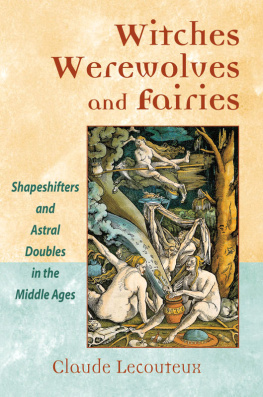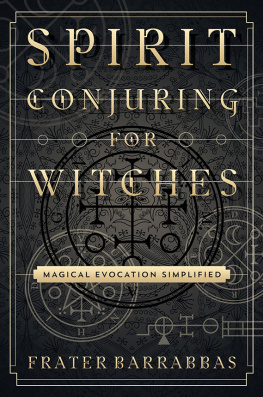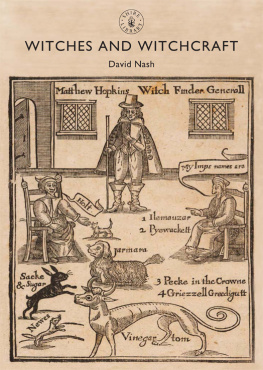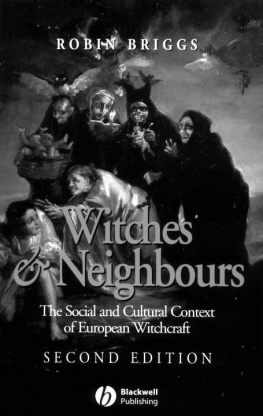Copyright 2002 by Truman State University Press
100 East Normal Street, Kirksville, Missouri 63501-4221 USA
http://tsup.truman.edu
All rights reserved
Library of Congress Cataloging-in-Publication Data
Werewolves, witches, and wandering spirits : traditional belief and folklore in early modern Europe / edited by Kathryn A. Edwards.
p. cm. (Sixteenth century essays & studies ; v. 62)
Includes bibliographical references and index.
ISBN 1-931112-09-6 (casebound : alk. paper) ISBN 1-931112-08-8 (pbk. : alk. paper) ISBN 978-1-935503-73-6 (ebook)
1. FolkloreEurope. 2. Folk literatureEuropeHistory and criticism. 3. Supernatural. 4. WitchcraftEurope. 5. DemonologyEurope. I. Edwards, Kathryn A. 1964II. Series.
GR135 .W47 2002
398'.094dc21
2002018859
Cover art: The Werewolf by Lucas Cranach the Elder (14721553). Snark / Art Resource, N.Y.
Cover design by Winston Vanderhoof
No part of this work may be reproduced or transmitted in any format by any means, electronic or mechanical, including photocopying and recording or by an information storage or retrieval system, without permission in writing from the publisher.
Habent sua fata libelli
SIXTEENTH CENTURY ESSAYS & STUDIES SERIES
GENERAL EDITOR
RAYMOND A. MENTZER
University of Iowa
EDITORIAL BOARD OF SIXTEENTH CENTURY ESSAYS & STUDIES
ELAINE BEILIN | ROGER MANNING |
Framingham State College | Cleveland State University, Emeritus |
MIRIAM U. CHRISMAN | MARY B. MCKINLEY |
University of Massachusetts, Emerita | University of Virginia |
BARBARA B. DIEFENDORF | HELEN NADER |
Boston University | University of Arizona |
PAULA FINDLEN | CHARLES G. NAUERT |
Stanford University | University of Missouri, Emeritus |
SCOTT H. HENDRIX | THEODORE K. RABB |
Princeton Theological Seminary | Princeton University |
JANE CAMPBELL HUTCHISON | MAX REINHART |
University of WisconsinMadison | University of Georgia |
CHRISTIANE JOOST-GAUGIER | JOHN D. ROTH |
University of New Mexico, Emerita | Goshen College |
RALPH KEEN | ROBERT V. SCHNUCKER |
University of Iowa | Truman State University, Emeritus |
ROBERT M. KINGDON | NICHOLAS TERPSTRA |
University of Wisconsin, Emeritus | University of Toronto |
MERRY WIESNER-HANKS
University of WisconsinMilwaukee
C ONTENTS
Expanding the Analysis of Traditional Belief
Kathryn A. Edwards
Shapeshifting, Apparitions, and Fantasy in Lorraine Witchcraft Trials
Robin Briggs
Ghosts in Early Modern Bavaria
David Lederer
Possession and Exorcism in the Sacramental Life of Early Modern France
Sarah Ferber
Navigating between Visions of Heaven and Hell on Earth
Sara T. Nalle
Jews, Magic, and Community in Seventeenth-Century Worms
Dean Phillip Bell
A Nun-Witch in Eighteenth-Century Tuscany
Anne Jacobson Schutte
Sducteurs and Crdules Confront the Paris Police at the Beginning of the Eighteenth Century
Ulrike Krampl
Heinrich Bullinger and Jacob Ruef on the Power of the Devil
Bruce Gordon
Images of the Werewolf in Demonological Works
Nicole Jacques-Lefvre
H. C. Erik Midelfort
I NTRODUCTION
Expanding the Analysis of Traditional Belief
Kathryn A. Edwards
I NCORPORATING THE ANOMALOUS
When Huguette Roy was visited by a ghost for two months in 1628, the event was believed to be so extraordinary that a local clergyman left a detailed chronicle of the haunting. A mixture of Counter-Reformation piety, demonological theory, and folkloric assumptions guided his history, which he wrote from his own observation of the event as well as from information provided by the myriad lay and ecclesiastical observers, by the haunted woman, and by the spirit itself. Unlike many similar visionaries, however, Huguette was never tried for witchcraft nor was she put through detailed and dramatic exorcisms, events that engender the documents by which such cases are most commonly known. For this reason, the vast synthetic literature on early modern witchcraft can seem tangential to understanding Huguettes haunting. A central problem for research on stories like Huguettes thus becomes where to find information about similar cases in early modern Europe.
This problem does not arise because of a lack of early modern reports about visions, spirits, and other supernatural or paranormal phenomena, to use perhaps anachronistic modern terminology. Embedded in the records of Inquisitorial and other courts, as well as in diverse other sources, are records about mysterious ladies in white, werewolves, poltergeists, and other less classifiable occurrences. In this sense, each of the articles in this collection contributes to this expansion and deepening of studies on traditional belief by developing aspects of it that are less frequently studied in more synthetic monographs.
The relationship between traditional belief and social discipline is just one of the themes that has been developed recently in social and cultural analyses of early modern Europe. Over the last several decades religious history has gradually grown to include reinterpretations of popular practices and perceptionssuch as pilgrimage, miracles, sacramentals, and the cult of the Virginalongside more traditional works that examine theology and institutions. Many of the articles in this collection provide a brief survey of these developments as they pertain to the articles topic. Building on historical anthropology and the insights and methods of pioneering monographs, scholars working in these areas have vastly broadened the ways that early modern belief and spirituality are now approached.
By its emphasis on traditional belief, such work is inherently folkloric even when its methodology may differ from that practiced by folklorists, thus the second half of this books title. Essential to modern studies of traditional religion in early modern Europe are questions of transmission and interpretation. Rather than being passive recipients of a falsely dichotomous learned culture, the peoplean admittedly broad and problematic termhave been repeatedly shown to be active creators of meaning. While their creations could vary enormously depending on culture, gender, class, and individual quirks, to name but a few qualifiers, certain concerns, perspectives, and frameworks have been found to recur in sixteenth- and seventeenth-century Europe. The Eucharist retains an almost magical power, whether it be transubstantiated, consubstantiated, or symbolic; supernatural or preternatural forces abound in this world, although they can take dozens of forms including those of demons, angels, trolls, wandering souls, or flying serpents. Although such beliefs may be interpreted differently, they remain a pervasive part of early modern culture for the literate, illiterate, and the larger community in between. Moreover, not all of these beliefs were as inherently threatening as witchcraft, whether it be viewed as the practice of
Next page
